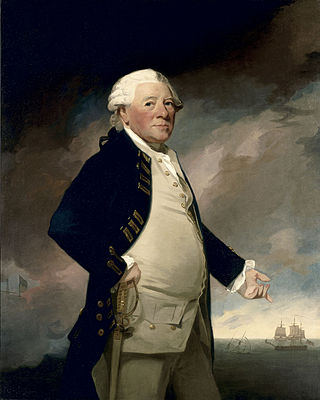
Baron Berners is a barony created by writ in the Peerage of England.

Earl of Lonsdale is a title that has been created twice in British history, firstly in the Peerage of Great Britain in 1784, and then in the Peerage of the United Kingdom in 1807, both times for members of the Lowther family.

Earl of Verulam is a title in the Peerage of the United Kingdom. It was created in 1815 for James Grimston, 4th Viscount Grimston. He was made Viscount Grimston at the same time. Verulam had previously represented St Albans in the House of Commons. In 1808 he had also succeeded his maternal cousin as tenth Lord Forrester. He was succeeded by his son, the second Earl.

Baron Grimston of Westbury, of Westbury in the County of Wiltshire, is a title in the Peerage of the United Kingdom. It was created in 1964 for the Conservative politician and former Deputy Speaker of the House of Commons, Sir Robert Grimston, 1st Baronet. He had already been created a baronet in 1952. Grimston was the son of Reverend Canon the Hon. Robert Grimston, third son of James Grimston, 2nd Earl of Verulam. As of 2017 the titles are held by his grandson, the third Baron, who succeeded his father in 2003.

Sir Harbottle Grimston, 2nd Baronet was an English lawyer and politician who sat in the House of Commons at various times between 1640 and 1685 and was Speaker in 1660. During the English Civil War he remained a Parliamentarian but was sympathetic to the Royalists.

The title Marquess of Halifax was created in the Peerage of England in 1682 for the George Savile, 1st Earl of Halifax.

Baron Masham is a title that has been created three times, once in the Peerage of Great Britain and twice in the Peerage of the United Kingdom. It was first created in the Peerage of Great Britain in 1712 when the courtier Samuel Masham was made Baron Masham, of Otes. In 1723 he also succeeded as fourth Baronet of High Lever. The barony became extinct on the death of the second Baron in 1776. The Masham baronetcy, of High Lever in the County of Essex, was created by James I in the Baronetage of England on 20 December 1621 for Samuel Masham. The third Baronet was Member of Parliament for Essex. The baronetcy became extinct along with the barony in 1776.
There have been two baronetcies created for persons with the surname Colquhoun ("Cohoon"), one in the Baronetage of Nova Scotia (1625) and one in the Baronetage of Great Britain (1786).
There have been two baronetcies created for people with the surname Heathcote, both in the Baronetage of Great Britain and both created in 1733. The holders of the first creation were later elevated to the peerage as Baron Aveland and Earl of Ancaster, which titles are now extinct. However, both baronetcies are extant as of 2008.
There have been two baronetcies created for people with the surname Jenkinson, both in the Baronetage of England. The seventh holder of the first creation was elevated to the peerage as Earl of Liverpool in 1796, a title which became extinct in 1851.

There have been two baronetcies created for people with the surname Tollemache, or Talmash, one in the Baronetage of England and one in the Baronetage of Great Britain.

There have been seven baronetcies created for persons with the surname Parker, three in the Baronetage of England, two in the Baronetage of Great Britain and two in the Baronetage of the United Kingdom. Two of the creations are extant as of 2008. Though none of the different families of baronets were related, several supplied a number of flag officers to the Royal Navy.
James Walter Grimston, 1st Earl of Verulam, styled Lord Dunboyne from 1775 until 1808 and known as the 4th Viscount Grimston from 1808 to 1815, was a British peer and politician.
James Walter Grimston, 2nd Earl of Verulam, known as Viscount Grimston from 1815 to 1845, was a British peer and Conservative politician. He was the eldest son of James Walter Grimston, 1st Earl of Verulam, and Lady Charlotte Jenkinson. He succeeded his father as 2nd Earl of Verulam in November 1845.

William Grimston, 1st Viscount Grimston was an English peer and politician who sat in the House of Commons of Great Britain between 1710 and 1734.
There have been two baronetcies created for persons with the surname Luckyn, both in the Baronetage of England.
There have been nine baronetcies created for persons with the surname Roberts, three in the Baronetage of England and six in the Baronetage of the United Kingdom. As of 2014 four of the creations are extant.
There have been four baronetcies created for persons with the surname Rich, two in the Baronetage of England, one in the Baronetage of Great Britain and one in the Baronetage of the United Kingdom. As of 2008 three of the creations are extinct while one is dormant.

Sir Harbottle Grimston, 1st Baronet was an English politician who sat in the House of Commons variously between 1614 and 1648. He supported the Parliamentarian side in the English Civil War.
Sir Samuel Grimston, 3rd Baronet of Gorhambury House, Hertfordshire was an English politician.











